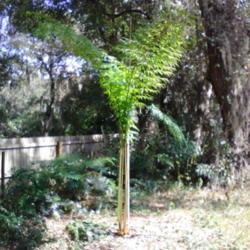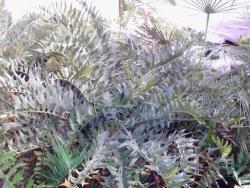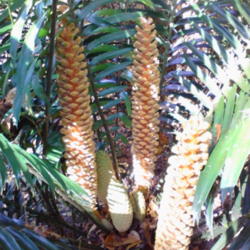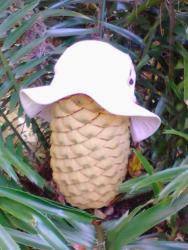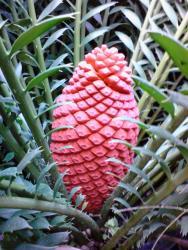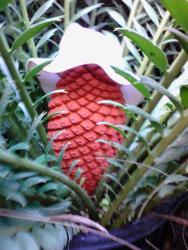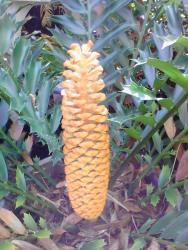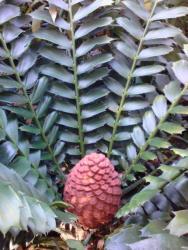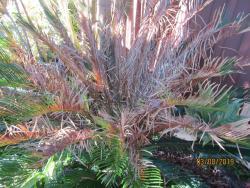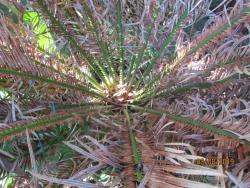Dioon edule is a great cycad species to start out with, when you are thinking about having a rare cycad garden.

Dioon edule is the species people here in Florida are replacing their sagos with. A single headed plant has the same specs as far as size goes. Dioon edule typically has a 6 foot spread and rarely gets taller than about 5 feet tall. The more tropical forms are foliage hardy about 3 degrees lower than king sagos and the more cold hardy forms are foliage hardy up to 8 degrees lower. This means that anywhere you see sagos, you can grow these, and if you are marginal for sagos, you can probably grow these. They grow a little slower than sagos, but that is because a single stem of a Dioon edule can live 1500 years and be about 15 feet tall, where Cycad revoluta may only live 200 or less years. Some people don't like edules as much because they are a bit thinner growing and the leaves are a little lighter in color. One advantage of these is that it fills the space of a Cycas revoluta, but does not get infested with the Asian scale, which has killed over $1 billion worth of sagos in Florida alone. Sagos are from Japan and other lower islands, thus, Asia, so the Asian scale loves them. Dioon edule comes from Mexico, so the scale doesn't like the taste of them.
The plant in the above picture is a 300+ year old male Dioon edule from the Palma Sola area in Mexico. This is a faster growing edule type so it makes a better landscape plant when you are growing it from seed. This is a picture of his mate, the female sitting beside him. They have been together, side by side for a documented 81 years.
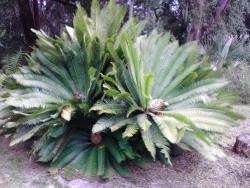
You can see the female cones on this plant, but here is a close up of one of the cones that is showing the mature seeds, since the top of the cone fell off.
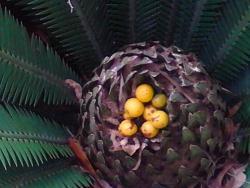
The yellow color is the seed coat, which attracts animals and encourages them to carry off the seed to another location, eat the coating, and spit out the hard seed. This is what the seeds end up looking like.
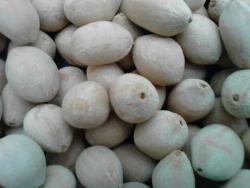
The end with the hole is the attachment point and the end with the hatch is the sprouting end. When you plant the seeds, they are planted half way into the sand, attachment point down. At the time you pick the seeds, they are ready to sprout, where Cycas revoluta seeds have to be stored at least 6 months before they should be planted. Since I had to take this picture for someone else, here is a seed cut open showing a full sized embryo.
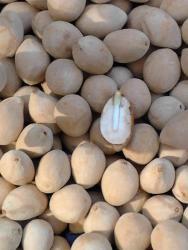
Dioon edule has now been split into two separate species. That used to be called Dioon edule edule and Dioon edule angustifolium. The angustifolium types are slower growing, have thinner leaflets, and are about 3-5 degrees more cold hardy. The queretaro form is one of these. Some of these have pinkish emergent leaves and can have a blue tinge to the leaves for a period of time. I have a picture of this one in the database, but don't know how to copy that into this post.
Dioon edule, as I said before is a great starter cycad. They are common enough that they aren't incredibly expensive, mainly because seeds are usually available at a modest price compared to the genera such as Encephalartos which you can find single seeds that cost $25 to $45 each. Dioon edule is easy to take care of. Some live 1500 years sitting on top of solid rock. If it can live sitting on rock, you can certainly do better than that for cultivation. Tom
